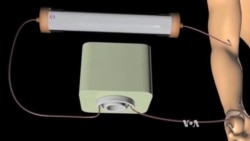Sepsis is a leading cause of death worldwide. But many people have never heard of it. In the United States, one million people develop sepsis annually, and up to half of them die from it. And in the developing world, it is responsible for up to 80 percent of deaths each year, with women and children hit especially hard.
Sepsis can be triggered by pneumonia, surgery, even childbirth. Symptoms include fever, increased breathing, and confusion. The body’s defense system goes out of control, causing widespread inflammation, organ failure and septic shock, where blood pressure drops to a dangerously low level.
But now a new, innovative treatment for sepsis may save many lives.
Scientists at Harvard University’s Wyss Institute are working on a new dialysis system that cleans the blood of poisonous pathogens before they trigger that deadly inflammatory response.
"The current standard of therapy is to give antibiotics and fluids,” said senior scientist, Mike Super. “But what we are talking about here is treatment for sepsis.”
The researchers are filtering blood through a tube with tiny mesh fibers coated with an engineered protein called fcMBL. "They bind to the cell wall of bacteria, of fungi, of many viruses and many parasites and they bind to toxins as well,” Super explained.
He further described the procedure saying: "We’re coating the inside of the tubes with that protein and we are running the infected blood from the patient through that, through the filter and binding, absorbing, capturing the pathogens that are in that blood, so that the blood that is going back to the patient after the dialysis is cleansed.”
In a trial phase using rats, the dialysis treatment was more than 99 percent effective in filtering out deadly bacteria. The research team anticipates beginning human trials soon, in hopes of saving millions of lives around the world.








